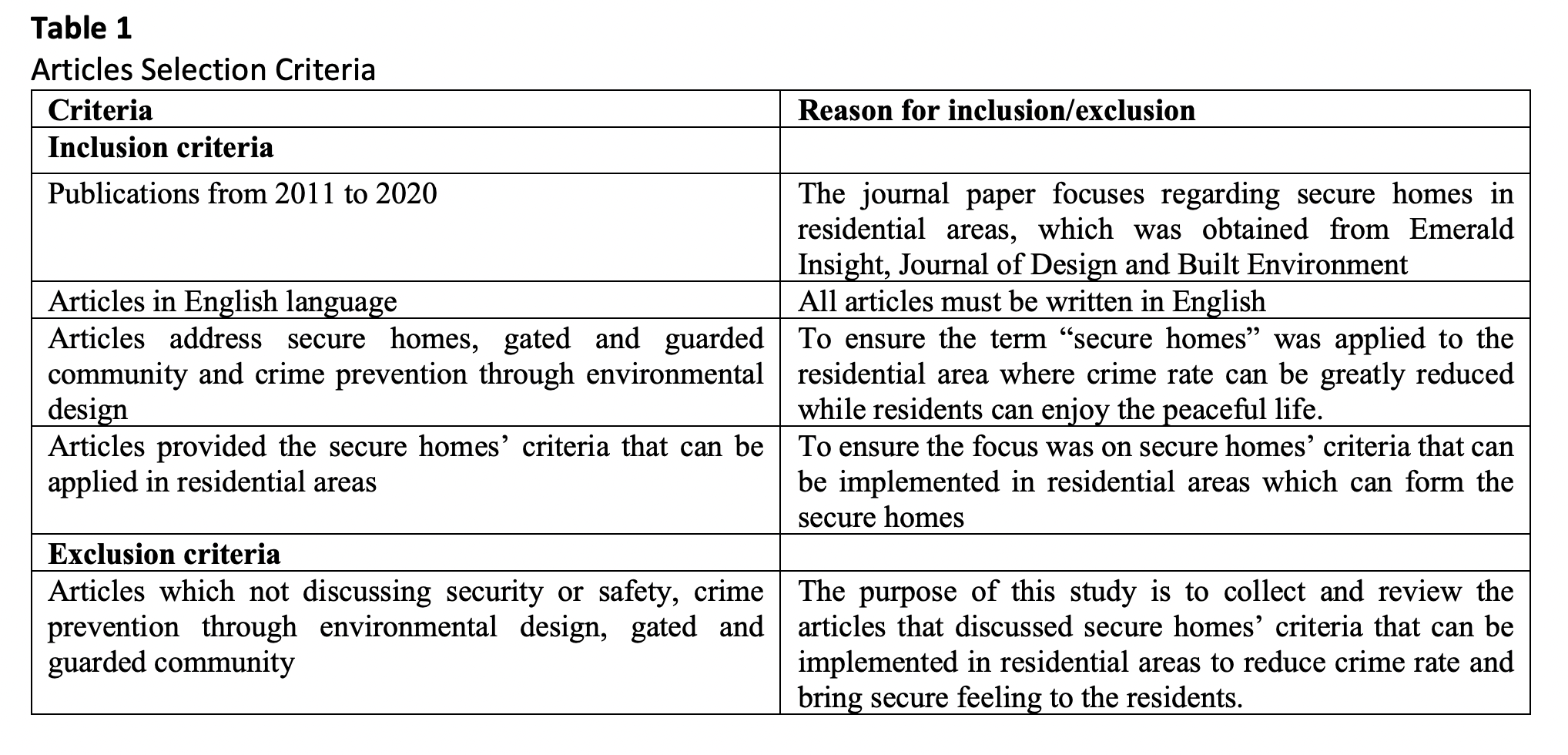Secure Homes Criteria in Malaysian Houses: A Systematic Literature Review
DOI:
https://doi.org/10.37934/araset.28.3.113Keywords:
Connectivity, CPTED, Technology, Sustainability, Third generationAbstract
The crime rate in Malaysia in increasing in every year, especially in the high-density residential area. This has brought the increase of awareness and concern on the security issues in the residential area from the residents. Thus, secure homes’ concept seems to become a dominant feature of Malaysian housing development projects today as it can improve the security criteria. However, people are still living in the fear of crime, especially in the urban areas due to the ineffectiveness of the crime prevention approaches. Therefore, this paper aims to explore the current practices of secure homes’ development and to evaluate their impacts. 129 relevant articles published between 2011 to 2020 have been collected to go through systematic literature review. The results show publications concerning on secure homes is having an exponential growth. Next, the findings showed that there are tangible criteria and intangible criteria that can reduce the crime rate significantly. The tangible criteria are surveillance, access control, territoriality and target hardening while the intangible criteria include the sense of community, and management and maintenance. The findings of this study further show that there were enough practical and theoretical proofs attesting to the desirability of secure homes as a veritable tool in residential neighborhood crime prevention. The results of this study can be used as the fundamental to develop a more effective and efficient crime prevention approach that not only apply the conventional approach but consider integrating current technologies which can greatly reduce the fear of crime.Downloads

Downloads
Published
2022-11-30
How to Cite
Khoo Terh Jing, Radzi Ismail, Ha Chin Yee, & Mohd Wira Mohd Shafiei. (2022). Secure Homes Criteria in Malaysian Houses: A Systematic Literature Review. Journal of Advanced Research in Applied Sciences and Engineering Technology, 28(3), 1–13. https://doi.org/10.37934/araset.28.3.113
Issue
Section
Articles




























